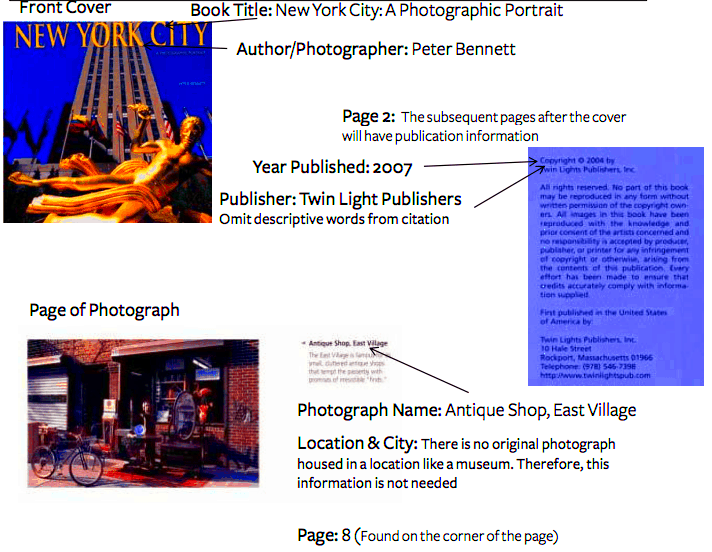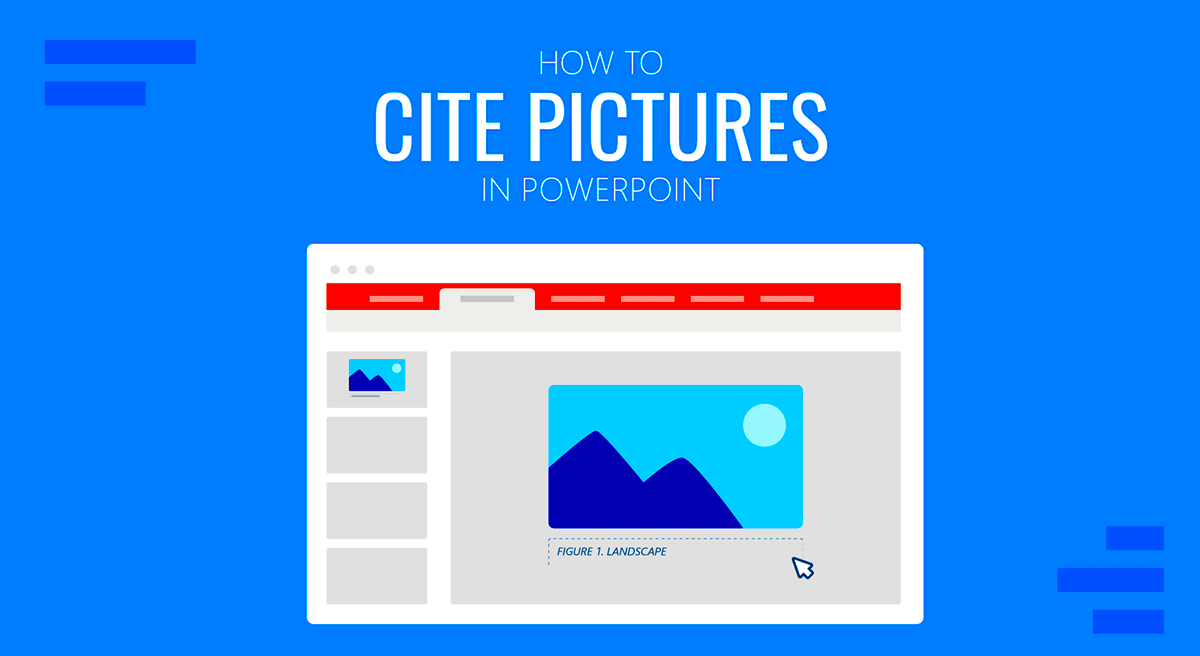Citing stock images correctly is a crucial step in ensuring that you respect the intellectual property rights of photographers and creators. Whether you're using stock images for a blog, website, presentation, or social media post, giving proper credit helps you avoid potential legal issues. It also shows professionalism and supports the work of content creators. But understanding the citation process can be confusing at first. In this post, we'll break it down and provide easy-to-follow steps to help you cite your stock images the right way.
Why Citing Stock Images Is Important

When you use stock images, you’re using someone else's creative work, and it’s essential to respect their rights. Proper citation ensures you're giving credit where it's due and adhering to the terms of the image's license. Here’s why citing stock images is important:
- Legal Protection: Not citing images correctly can lead to copyright infringement and legal trouble. Following proper guidelines keeps you safe from lawsuits.
- Respect for Creators: Every stock image you use is created by someone who deserves credit for their work. A simple citation honors their effort.
- Professionalism: Including proper citations shows that you’re committed to ethical standards and have a respect for legalities in your content.
- Transparency: Citing stock images lets your audience know the source of your visuals, which can increase trust in your work.
In short, citing stock images properly isn’t just about legal protection; it’s also about supporting creators and enhancing the professionalism of your work.
How to Find Licensing Information for Stock Images

Finding the licensing information for stock images is a simple process, but it's essential to ensure you comply with the image’s terms. Here’s how you can find this information:
- Check the Stock Image Website: Most stock image platforms provide clear licensing details on each image’s page. These details will explain the type of license (e.g., royalty-free, editorial use, extended licenses) and any usage restrictions.
- Download Information: When you download an image, many platforms also provide a document or file with licensing terms. Always review this file to understand your rights.
- Look for License Type Icons: Some stock sites display icons next to images to indicate the license type. For example, a "Royalty-Free" label means you can use the image in various ways, while "Editorial Use Only" means the image can’t be used for commercial purposes.
- Contact the Image Provider: If the license information is unclear, don't hesitate to reach out to the image provider for clarification. It’s always better to be sure than to risk misuse.
When in doubt, always check the stock image site’s licensing section before using the image to ensure you're following the rules and can confidently cite the work.
Understanding Different Types of Licenses for Stock Images
When you purchase or download a stock image, it comes with a specific license that outlines how you can legally use it. Understanding these licenses is essential to avoid any misuse and to ensure you're complying with the image's terms. Here are the most common types of stock
- Royalty-Free (RF): This license allows you to use the image for a one-time fee without paying royalties each time you use it. It’s one of the most common licenses, but it still comes with some restrictions, like no resale of the image.
- Editorial Use Only: Images under this license can only be used for non-commercial purposes, such as in news articles, blogs, or social media posts discussing current events. They can't be used in advertising or for products intended to generate profit.
- Extended License: This license provides more flexibility than standard licenses, often allowing you to use the image in products for resale, or to modify the image for commercial purposes. It's more expensive but comes with broader rights.
- Rights Managed (RM): These images are licensed for specific uses, often with restrictions on time, location, or audience. You'll need to negotiate the terms with the provider, and usage fees may vary based on these terms.
Knowing the type of license helps you understand what you can and can’t do with the image, and will make the citation process clearer. Always check the license before using a stock image to ensure you’re abiding by the terms.
Steps to Properly Cite Stock Images in Your Work
Citing stock images properly is key to respecting copyright laws and supporting creators. Here’s a simple step-by-step guide to help you correctly cite stock images in your work:
- Step 1: Identify the Image’s Source: Start by noting the stock image website where the image was sourced. This is the primary place to find citation details.
- Step 2: Check the License Type: As we discussed earlier, ensure you understand the license attached to the image. This will tell you if attribution is required.
- Step 3: Include the Creator’s Name: If the license requires attribution, include the creator's name. For example, "Photo by [Creator's Name]."
- Step 4: Add the Image Source URL: Include the direct URL where the image can be found, such as the specific page on the stock website. This adds transparency.
- Step 5: Mention the License Type (if required): If the license specifies a type (e.g., Royalty-Free, Editorial Use Only), mention it in your citation. Example: "Image used under Royalty-Free license from [Website]."
Here's an example citation:
“Photo by John Doe on StockImageSite, used under Royalty-Free license.”
By following these simple steps, you ensure that you're providing proper credit and complying with the image’s licensing terms.
Common Mistakes to Avoid When Citing Stock Images
While citing stock images may seem straightforward, there are some common mistakes that many people make. Avoiding these can help ensure you're respecting copyright and avoiding legal trouble:
- Not Checking the License: One of the most common mistakes is using an image without properly checking its licensing terms. Some licenses may not allow commercial use, and others might require specific attribution formats. Always double-check before you use an image.
- Incorrect Citation Format: It’s easy to get the citation format wrong. Be sure to include the creator’s name, image source, and license type (if required) in the right order. Double-check the format to ensure it meets the licensing requirements.
- Using Images Beyond License Terms: Sometimes people use images in ways not allowed by the license, such as for commercial purposes when the license only covers editorial use. Always be clear on what you can and can’t do with the image.
- Failure to Provide Proper Attribution: Some licenses require you to give credit, while others don't. If attribution is required and you fail to provide it, you might violate the terms and face legal consequences.
- Assuming All Images Are Free to Use: Not all stock images are free to use, even on platforms that offer free downloads. Always verify the image’s license, especially for free images.
By avoiding these common mistakes, you can ensure that you’re using stock images legally and ethically, and help protect both yourself and the creators whose work you appreciate.
How Citing Stock Images Can Help You Avoid Legal Issues
When you use stock images in your content, it’s essential to understand the legal implications. Failing to properly cite stock images or not following licensing agreements can lead to serious legal consequences, including fines or lawsuits. Proper citation and adherence to licensing terms help protect you from these risks and ensure you're using images responsibly. Here's how citing stock images can keep you out of trouble:
- Copyright Protection: Stock images are protected by copyright law, and creators have the right to control how their work is used. By citing the image properly, you acknowledge the creator's rights and comply with the legal requirements, which helps protect you from accusations of infringement.
- Avoiding Lawsuits: Incorrectly using an image or failing to credit the creator can lead to copyright infringement claims. Properly citing the image ensures that you're following the licensing rules and lowers the risk of legal action.
- Supporting Fair Use Practices: Citing stock images in the right way promotes the ethical use of content. It’s a simple yet effective way to avoid violating intellectual property laws and to contribute to the industry’s standards.
- Minimizing Liability: When you give proper credit and follow the licensing terms, you make it clear that you're using the image with permission. This reduces your liability in case of disputes.
In summary, citing stock images correctly is a small step that goes a long way in protecting yourself legally, supporting content creators, and maintaining a professional image in your work.
FAQ: Frequently Asked Questions about Citing Stock Images
Have questions about citing stock images? You're not alone! Here are some of the most frequently asked questions to clear up any confusion:
- Do I always need to cite stock images? It depends on the license. Some stock images require attribution, while others do not. Always check the licensing details before using the image.
- Can I use stock images without citation for commercial projects? Some stock images can be used without attribution for commercial purposes, especially with a Royalty-Free or Extended License. However, it’s important to check the license terms for each specific image.
- What happens if I don’t cite stock images? If you fail to cite stock images when required, you could face legal issues, such as copyright infringement claims or penalties. Always follow the license terms to avoid these risks.
- Is there a standard citation format for stock images? While formats may vary slightly, a typical citation includes the creator’s name, the source website, and the license type (e.g., "Photo by [Name] on [Website], used under Royalty-Free license"). Always refer to the licensing agreement for specific instructions.
- Can I modify stock images if I cite them? It depends on the license. Some licenses allow you to modify images, while others may not. Always check whether the license permits modifications and any other restrictions before altering the image.
By addressing these common questions, you can gain more clarity on how to properly cite stock images and stay within legal bounds.
Conclusion: Key Takeaways on Citing Stock Images
Citing stock images is not just about following legal guidelines; it’s also about respecting the work of creators and enhancing the professionalism of your own content. Here are the key takeaways to remember when citing stock images:
- Understand the License: Always check the licensing terms of an image before using it to ensure you're allowed to use it in the way you intend.
- Give Credit Where It’s Due: If the license requires attribution, make sure to include the creator's name, the image source, and any relevant licensing information.
- Avoid Legal Risks: Proper citation helps you avoid copyright infringement and legal issues, protecting you and supporting creators.
- Support Ethical Practices: Citing images correctly not only keeps you safe legally but also promotes fairness and ethical use of digital content.
In conclusion, always be mindful of the licensing terms for the stock images you use and ensure you’re giving credit where it's due. By doing so, you'll avoid legal pitfalls and maintain professionalism in your work. Remember, proper citation is a small effort that can make a big difference!

 admin
admin








